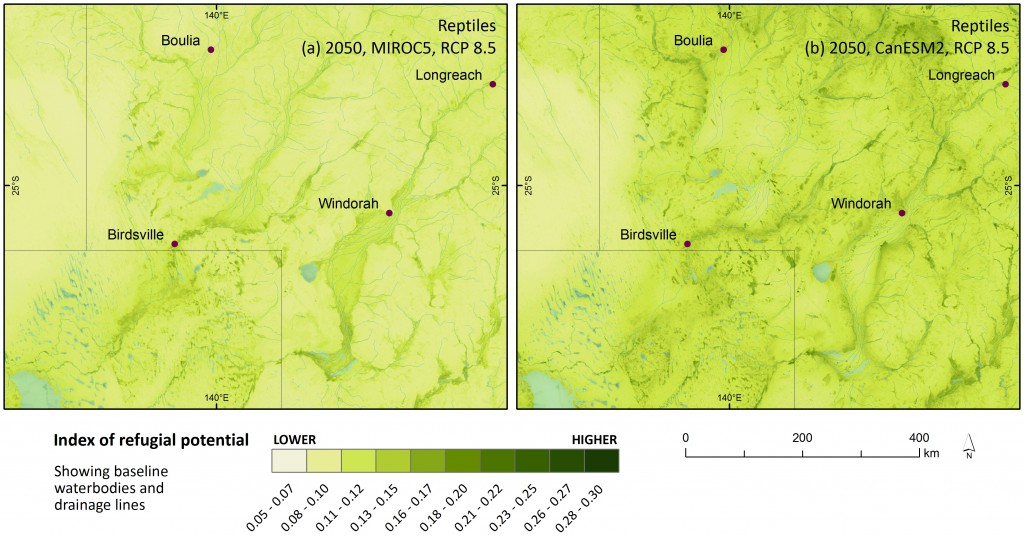Refugial potential
- The term refugium refers to a habitat that species are able to retreat to, persist in, and expand from under climate change.
- The measure potential degree of ecological change presented in Implications for Biodiversity indicates areas of relative climatic stability in the future. These areas of low projected change may be valuable refugia.
- Our new measure, refugial potential, is an index of future rarity of environments and their proximity to current locations of those environments.
Click on the boxes below to explore examples at national and regional scales.
Find out more
Open allClose allThis example illustrates the national pattern of refugial potential for amphibians, for the high emissions’ hot CanESM2 climate scenario (2050). There are distinct areas with higher refugial potential (darker greens) concentrated in areas where there is greater topographic relief, especially around the eastern and northern coastal rim of Australia and across Tasmania. Some inland ranges also show distinctly higher refugial potential, particularly the MacDonnell Ranges in central Australia, and the Hamersley Range in the Pilbara region of Western Australia.

Index of refugial potential for amphibians under the high emissions’ hot CanESM2 climate scenario. Darker greens indicate greater potential as refugia for more of the local biota. The legend is shown in categories, but the data itself is continuous.
Regional-scale analyses reveal that refugial potential can be associated with other types of diverse microenvironments like gradients in moisture availability across inland floodplains. In this regional example for reptiles under the high emissions’ mild MIROC5 climate scenario, moderate refugial potential is apparent on the major floodplains, with intervening areas of lower potential.

(a) Refugial potential for reptiles in the Channel Country at the intersection of the Queensland, NSW and South Australian borders, under the high emissions’ mild MIROC5 climate scenario; and (b) hot CanESM2. Image shows baseline lakes and drainage lines in blue for context.
